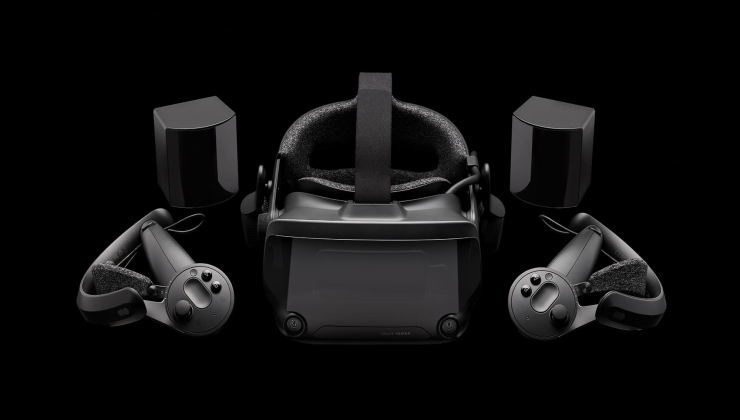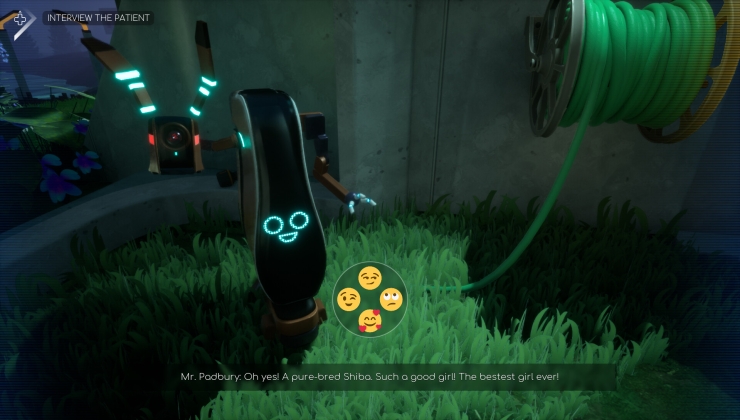I did it, I jumped ship from Ubuntu to Antergos and I honestly can’t see myself going back. Here’s some thoughts on that.
Why I switched
There’s many reasons for my switch, but the main one has been stability. Ubuntu has been getting more problem-filled with every new release for me so I had enough. Not only that, but due to it being dependent on GNOME packages, stuff was being stripped away too and it’s just a mess now. Some applications have normal title-bars, some have GNOME’s new styling with everything sodding hidden and it’s just all mashed together.
Audacity would constantly screw up and just skip over audio while trying to record or playback, or just flat out not work.
Multiple games wouldn’t give me audio until I killed PulseAudio and reloaded it or did other trickery. It was becoming a nuisance, especially when I want to livestream and “oh sorry guys, let me fix my audio, fuc…”.
It seems Ubuntu has a lot of problems with their setup of PulseAudio. I don’t know what they’re doing to it, but they’re murdering the poor thing.
Antergos, I choose you!
If Antergos is anything, it’s like walking in heavy rain without a coat and — suddenly the clouds part and the almighty sun is shining down on you to make everything better. Something like this essentially (thanks Samsai):

I’mdefinitely probably not overselling it — okay maybe a little.
I adore the Arch User Repository (AUR) and have found it so incredibly useful for multiple applications I use on a daily basis, especially when those same applications on Ubuntu could be out of date for weeks and months. The brand new Minecraft launcher was in it the day it was release by the official developers, the itch.io app is in it, everything I need is right there and tested by tons of people. It’s essentially a far better PPA-like system. It’s easier to understand too, thanks to a much clearer layout on the actual website.
Just don't outright trust everything on the AUR, make sure you read a few comments before installing a random package. I'm sure you're all smart enough to know to do that anyway.
Getting used to KDE after being on GNOME or GNOME-like desktops for many years has been a challenge by itself, but wow, it’s actually a lot nicer. Things aren’t hidden away where I don’t expect them to be, if I want something it’s usually right where I would expect it in a proper menu.
There was two “gotchas” I had to sort out. I couldn’t figure out why OBS Studio wouldn’t pick up any video, so eventually I tested gaming and games ran at 5 FPS. Turns out that installing the nvidia drivers didn’t come with the 32bit libs as a dependency. So, if you do decide to check out Antergos with Nvidia, make sure “lib32-nvidia-libgl” is installed too. This took me a good day to figure out too, as I didn’t think to test games until the next day and that made me realize it was a driver issue.
The second was that one day I booted up to a black screen with a cursor, as the system booted so fast that LightDM didn't load (Arch Wiki entry). I had to edit "/etc/lightdm/lightdm.conf" to include:
I also learnt about bash aliases thanks to being on Arch, so instead of running something I can never remember like “Yuarty -sYusudaadasdas” to update, I have it setup so I just run “upall” in terminal and it updates everything for me — glorious! It’s easy to do as well, simply edit:
Add at the bottom:
You can substitute “yaourt -Syua” for anything, like “apt-get update && apt-get upgrade” for Debian/Ubuntu and so on.
And then save it.
Lastly, enjoy a shot of my KDE Antergos dual-desktop:

Seriously, you should give Antergos a try. It’s Arch, but a more tame Arch since it has a live-media option and you can pick what desktop you want from the installer. This was a key selling point for me, and the installer was a breeze too.
Why I switched
There’s many reasons for my switch, but the main one has been stability. Ubuntu has been getting more problem-filled with every new release for me so I had enough. Not only that, but due to it being dependent on GNOME packages, stuff was being stripped away too and it’s just a mess now. Some applications have normal title-bars, some have GNOME’s new styling with everything sodding hidden and it’s just all mashed together.
Audacity would constantly screw up and just skip over audio while trying to record or playback, or just flat out not work.
Multiple games wouldn’t give me audio until I killed PulseAudio and reloaded it or did other trickery. It was becoming a nuisance, especially when I want to livestream and “oh sorry guys, let me fix my audio, fuc…”.
It seems Ubuntu has a lot of problems with their setup of PulseAudio. I don’t know what they’re doing to it, but they’re murdering the poor thing.
Antergos, I choose you!
If Antergos is anything, it’s like walking in heavy rain without a coat and — suddenly the clouds part and the almighty sun is shining down on you to make everything better. Something like this essentially (thanks Samsai):

I’m
I adore the Arch User Repository (AUR) and have found it so incredibly useful for multiple applications I use on a daily basis, especially when those same applications on Ubuntu could be out of date for weeks and months. The brand new Minecraft launcher was in it the day it was release by the official developers, the itch.io app is in it, everything I need is right there and tested by tons of people. It’s essentially a far better PPA-like system. It’s easier to understand too, thanks to a much clearer layout on the actual website.
Just don't outright trust everything on the AUR, make sure you read a few comments before installing a random package. I'm sure you're all smart enough to know to do that anyway.
Getting used to KDE after being on GNOME or GNOME-like desktops for many years has been a challenge by itself, but wow, it’s actually a lot nicer. Things aren’t hidden away where I don’t expect them to be, if I want something it’s usually right where I would expect it in a proper menu.
There was two “gotchas” I had to sort out. I couldn’t figure out why OBS Studio wouldn’t pick up any video, so eventually I tested gaming and games ran at 5 FPS. Turns out that installing the nvidia drivers didn’t come with the 32bit libs as a dependency. So, if you do decide to check out Antergos with Nvidia, make sure “lib32-nvidia-libgl” is installed too. This took me a good day to figure out too, as I didn’t think to test games until the next day and that made me realize it was a driver issue.
The second was that one day I booted up to a black screen with a cursor, as the system booted so fast that LightDM didn't load (Arch Wiki entry). I had to edit "/etc/lightdm/lightdm.conf" to include:
[LightDM]
logind-check-graphical=trueI also learnt about bash aliases thanks to being on Arch, so instead of running something I can never remember like “Yuarty -sYusudaadasdas” to update, I have it setup so I just run “upall” in terminal and it updates everything for me — glorious! It’s easy to do as well, simply edit:
~/.bashrcAdd at the bottom:
alias upall='yaourt -Syua'You can substitute “yaourt -Syua” for anything, like “apt-get update && apt-get upgrade” for Debian/Ubuntu and so on.
And then save it.
Lastly, enjoy a shot of my KDE Antergos dual-desktop:

Seriously, you should give Antergos a try. It’s Arch, but a more tame Arch since it has a live-media option and you can pick what desktop you want from the installer. This was a key selling point for me, and the installer was a breeze too.
Some you may have missed, popular articles from the last month:
All posts need to follow our rules. For users logged in: please hit the Report Flag icon on any post that breaks the rules or contains illegal / harmful content. Guest readers can email us for any issues.
I only install very minimal packages from AUR. They don't guarantee compatibility with core, community and extra.
Not sure what's the benefit of Antergos.. i think i prefer vanilla Arch.
for me vanilla too much work for ready to daily use
Recently, the freetype2 implementation with AUR for infinality fonts was outdated (not based on the latest freetype2 update). This broke some packages from core/community/extra. I had to remove that old implementation and install the latest freetype2 from core/community/extra (which is now very beautiful).
This is an example.
Some programs i still use AUR for just because of convenience and it dosen't really impact other packages. Like Skype for Linux - Alpha and various other small packages. For Telegram, it has it's own built in updater and there's an updater binary in the folder which you download from the website so you don't need AUR. Discord i like to install manually too.
I actually have a /home/$user/opt folder for this stuff and /home/$user/git folder for stuff from git.
For the stuff that's potentially system breaking, i don't use AUR.
0 Likes
I'd so delighted on trying Manjaro (XFCE) I think that is the most balanced distro over there. But for me, there's only an issue, I owe a gaming laptop which is not able to boot into manjaro's usb live media. I had to throw everything and go back to mint and screentearing (optimus sucks)
0 Likes
Article updated as I came across a second "gotchya".
I booted up to a black screen with a cursor, as the system booted so fast that LightDM didn't load (Arch Wiki entry. I had to edit "/etc/lightdm/lightdm.conf" to include:
Running "sudo systemctl restart lightdm.service" fixed it for the current login.
Something to keep in mind if you have the issue, thanks to Samsai for the help on it.
I booted up to a black screen with a cursor, as the system booted so fast that LightDM didn't load (Arch Wiki entry. I had to edit "/etc/lightdm/lightdm.conf" to include:
[LightDM]
logind-check-graphical=trueRunning "sudo systemctl restart lightdm.service" fixed it for the current login.
Something to keep in mind if you have the issue, thanks to Samsai for the help on it.
0 Likes
I suppose I should make an obligatory comment as I'm using Arch (since 2009) ;)
The best thing about installing Arch is that you learn exactly how your system works - and it can be any kind of install your imagination can come up with. I don't run a DE, for example, my desktop is basically the WM (Compiz), Conky, Cairo-Dock, stalonetray, xsettingsd. Also, as has been mentioned, you have the wonderful AUR (I use Cower and a bunch of aliases for this), the Wiki and Pacman.
I've never reinstalled, only rsync'ed my boot drive when I've had to upgrade the hardware. You will experience problems occasionally but I'd call these niggles and I've never had one I couldn't solve quickly just by checking the forums or Wiki. Call me perverse but I actually like problem solving any issues anyway! If you know what's installed (because you installed it) and why, then it's easier to troubleshoot and becomes second nature (I'm no techie by any means).
It won't be for everyone, obviously, but if you want absolute control over your install and have the latest software as soon as it's updated/released then give it a go.
The best thing about installing Arch is that you learn exactly how your system works - and it can be any kind of install your imagination can come up with. I don't run a DE, for example, my desktop is basically the WM (Compiz), Conky, Cairo-Dock, stalonetray, xsettingsd. Also, as has been mentioned, you have the wonderful AUR (I use Cower and a bunch of aliases for this), the Wiki and Pacman.
I've never reinstalled, only rsync'ed my boot drive when I've had to upgrade the hardware. You will experience problems occasionally but I'd call these niggles and I've never had one I couldn't solve quickly just by checking the forums or Wiki. Call me perverse but I actually like problem solving any issues anyway! If you know what's installed (because you installed it) and why, then it's easier to troubleshoot and becomes second nature (I'm no techie by any means).
It won't be for everyone, obviously, but if you want absolute control over your install and have the latest software as soon as it's updated/released then give it a go.
1 Likes, Who?
Welcome to the Arch Universe, so to say.
I'm quite some time on Manjaro now, and I love it so far. Never looked back, though, I've been eyeballing with Antergos as well, but I prefer the way Manjaro updates their stable, every few weeks a fully tested update with their main desktops (KDE, XFCE), only dropping security patches if necessary between those updates every few weeks (as lately the flash update).
Antergos for me does not even boot in the live ISO, not on my laptop, not on my PC and not in Virtualbox. This quite killed every testing scenario I could have had (just even tested with the current ISO), which back the days killed it as an option when I was choosing a new system. And still would :D.
And ye, others are right, make sure you know what you install from AUR. Check the comments, and check scripts and download source. I've had arch since back in 2003 (with a bit of a break using KUbuntu), and never came across a malicious package - but that doesn't mean it couldn't happen.
Last edited by STiAT on 19 Jan 2017 at 10:53 am UTC
I'm quite some time on Manjaro now, and I love it so far. Never looked back, though, I've been eyeballing with Antergos as well, but I prefer the way Manjaro updates their stable, every few weeks a fully tested update with their main desktops (KDE, XFCE), only dropping security patches if necessary between those updates every few weeks (as lately the flash update).
Antergos for me does not even boot in the live ISO, not on my laptop, not on my PC and not in Virtualbox. This quite killed every testing scenario I could have had (just even tested with the current ISO), which back the days killed it as an option when I was choosing a new system. And still would :D.
And ye, others are right, make sure you know what you install from AUR. Check the comments, and check scripts and download source. I've had arch since back in 2003 (with a bit of a break using KUbuntu), and never came across a malicious package - but that doesn't mean it couldn't happen.
Last edited by STiAT on 19 Jan 2017 at 10:53 am UTC
1 Likes, Who?
I'd so delighted on trying Manjaro (XFCE) I think that is the most balanced distro over there. But for me, there's only an issue, I owe a gaming laptop which is not able to boot into manjaro's usb live media. I had to throw everything and go back to mint and screentearing (optimus sucks)
Ye, optimus sucks, and Manjaro currently has a few issues with mhwd as well regarding to Optimus, seems there are no devs with optimus hardware to do the proper testing. For me it worked choosing the non-free option, which even enables the nvidia driver during the boot time.
I'd suggest you try it again once Manjaro 17 is released. They finally are switching to Kernel 4.9 LTS for their install images, which solves a lot of issues booting the install image on several NVidia hardware compared to the released ISO with 4.4 for a variety of NVidia users.
Last edited by STiAT on 19 Jan 2017 at 10:50 am UTC
1 Likes, Who?
Call me perverse but I actually like problem solving any issues anyway! If you know what's installed (because you installed it) and why, then it's easier to troubleshoot and becomes second nature (I'm no techie by any means).
That's exactly what I liked about Arch, but after so many years running it, life has become more cluttered and I didn't have time to troubleshoot it any longer.
But it always comes in handy when you've got something wrong/weird with your system, even with other distributions. The only things that differ on my Fedora nowadays is SELinux policies and the system upgrades.
It comes with a pervert effect, though: whenever you see a strange boot message, you can't help but to investigate it... :P
1 Likes, Who?
That's exactly what I liked about Arch, but after so many years running it, life has become more cluttered and I didn't have time to troubleshoot it any longer.
That exactly. This was the reason for me too not choosing Arch this time but Manjaro when I moved away from *Ubuntu back to my beloved arch-like system.
You have a well tested system, are still quite bleeding edge, and if you hit the shit pile anyawy, there is Arch Wiki (which is a GREAT source of information) and forums, you'll find a lot of great solutions there.
1 Likes, Who?
I like Arch, and I enjoy seeing more people jumping ship, but I have to warn that it's a bit technical, and you have to be prepared to deal with this sort of stuff (Antargos included).
Once in a while, an update breaks something, or can't be installed, so you have to fix it yourself. I had quite some trouble at some point after having my computer sit in a corner 6+ months without being updated; which caused some problems with pacman (I think it was a problem with yaourt, package-query and pacman, I had to uninstall package-query and yaourt).
I also sometimes have some problems with pip and pacman conflicting over a few files.
Other than these problems, it works great. I would however advise to go for Manjaro as a first step if you don't feel ready for "the real thing" :)
But I am only repeating what I know from earsay, as I never tried Manjaro myself.
And however scary my problems can sound, I've had worse on Windows, Ubuntu, Debian (and to a lesser degree, Linux Mint). Windows being the worst of the worse so far, of course :D
Once in a while, an update breaks something, or can't be installed, so you have to fix it yourself. I had quite some trouble at some point after having my computer sit in a corner 6+ months without being updated; which caused some problems with pacman (I think it was a problem with yaourt, package-query and pacman, I had to uninstall package-query and yaourt).
I also sometimes have some problems with pip and pacman conflicting over a few files.
Other than these problems, it works great. I would however advise to go for Manjaro as a first step if you don't feel ready for "the real thing" :)
But I am only repeating what I know from earsay, as I never tried Manjaro myself.
And however scary my problems can sound, I've had worse on Windows, Ubuntu, Debian (and to a lesser degree, Linux Mint). Windows being the worst of the worse so far, of course :D
2 Likes, Who?
I'd so delighted on trying Manjaro (XFCE) I think that is the most balanced distro over there. But for me, there's only an issue, I owe a gaming laptop which is not able to boot into manjaro's usb live media. I had to throw everything and go back to mint and screentearing (optimus sucks)
Ye, optimus sucks, and Manjaro currently has a few issues with mhwd as well regarding to Optimus, seems there are no devs with optimus hardware to do the proper testing. For me it worked choosing the non-free option, which even enables the nvidia driver during the boot time.
I'd suggest you try it again once Manjaro 17 is released. They finally are switching to Kernel 4.9 LTS for their install images, which solves a lot of issues booting the install image on several NVidia hardware compared to the released ISO with 4.4 for a variety of NVidia users.
Thanks man, I'll definitely try it.
0 Likes
welcome to the arch family ;-)
1 Likes, Who?
Currently, I assume that your game reviews are performed on the current Ubuntu LTS. So, if a game works well for you, it should work well for me on my up to date Mint OS (as mostly on the same code base). Similarly, most commercial Linux games are tested against Ubuntu (and perhaps Steam OS), but often not against Arch type distributions. Assuming that you will use only Antergos for future reviews, can you give your views about the relevance of those future reviews for the current majority of the GOL readership, that if I understand your stats properly, use a Ubuntu based distribution.
[...]as I am thinking of trying Fedora and Arch myself, but I am concerned about loosing simple and reliable execution of games in my now large games library.
This concern is distribution independent, so unneeded. For Games it matters what kernel, drivers, mesa version you use.
Commercial games saying "supports Ubuntu,Nvidia" has primaly to do with legal protection.
In fact says nothing about how games working on users system or distro - Ubuntu is behind, arch-based distros are more bleeding-edge - saying that all games a running on my arch/amd since years, better as on ubuntu benchmarks, even if the news media claims otherwise (just gives me head shaking e.g. if "phoronix" says it doesn't work on amd card or has some regression, but it runs for me perfectly - since years he does fake news about bashing amd (vs nvidia) - but he just don't realizses that it's his broken ubuntu, not the amd driver (or he is paid from nvidia and does it on force))
Also lets asume a game offical only "supports" ubuntu - so what? If your pariticular ubuntu system is broken, the game still doesn't work - nothing gained.
So in the end: less worry, more doing!
1 Likes, Who?
Manjaro. It blends stability with bleeding edge, doesn't break as often as the more pure Arch(s)I don't like this false claim that "pure Arch(s)" break more often - or even ever break. It's just not true!
5 Likes, Who?
As others have said, welcome to the Arch life. :Dor just use pamac as gui (from manjaro) - if away from terminal;)
Yuarty -sYusudaadasdas” to updateOnly a suggestion (For the people wanting the more lazy route), but if you want Yaourt fancy, you should try out "yaourt-gui" in the AUR. At least anyone that doesn't blindly install everything from AUR. Because it makes Yaourt very basic user-friendly. You still need to know package names, but it makes searching the names easier too. As you just type the number 8 for "yaourt -Ss", follwed by a prompt you enter text for said search.
0 Likes
I've been on Ubuntu Mate for about 2 years now. Left Linux Mint on my main gaming rig. I use Lubuntu on some of my older rigs and machines. I've not had any issues with Pulse Audio or the like. Were you are on Ubuntu or some derivative? I've found Ubuntu problematic for me in the past. The DE does not help me get to what I need to go and there are many lib files I had to install to game properly.
I have questions for Antergos users:
* How are installs from GOG library?
* Is Vsync automatically dealt with like on Ubuntu Mate?
I have questions for Antergos users:
* How are installs from GOG library?
* Is Vsync automatically dealt with like on Ubuntu Mate?
0 Likes
what i do is install antergos cli base install with only aur support. then login in and:
you get stock gnome3 basics only, on a minimal base, with a decent packaging tool. no extra stuff installed, like themes, icon packs etc. you can go do that yourself if you want.
would love if antergos just instaled stock de's/wm's instead of customizing it.
sudo pacman -S gnome pamac && sudo systemctl enable gdm.service && rebootyou get stock gnome3 basics only, on a minimal base, with a decent packaging tool. no extra stuff installed, like themes, icon packs etc. you can go do that yourself if you want.
would love if antergos just instaled stock de's/wm's instead of customizing it.
1 Likes, Who?
I've been on Ubuntu Mate for about 2 years now. Left Linux Mint on my main gaming rig. I use Lubuntu on some of my older rigs and machines. I've not had any issues with Pulse Audio or the like. Were you are on Ubuntu or some derivative? I've found Ubuntu problematic for me in the past. The DE does not help me get to what I need to go and there are many lib files I had to install to game properly.These 2 questions have nothing to do with wether using ubuntu or any other distro - it's still linux. It's about the version of kernel, software, xorg/X11/wayland, mesa ... you use.
I have questions for Antergos users:
* How are installs from GOG library?
* Is Vsync automatically dealt with like on Ubuntu Mate?
Last edited by lelouch on 19 Jan 2017 at 12:53 pm UTC
1 Likes, Who?
Would it be a good option for people new to Linux?I'm torn on it, it depends on how good their general PC skills are. The installer isn't quite as straightforward.
For now, personally, I will still recommend Ubuntu for people to start with, especially as it's the distro that gets the main support for gaming.
2 Likes, Who?
Can Antergos dualboot safely with Windows 10 on a UEFI system? I currently dual boot Ubuntu 16.04 with Windows 10 on my main gaming desktop. I would be willing to give Antergos a try, but I need to know that it can install easily and work with a Windows 10 dualboot situation. Ubuntu handles this situation very well but not all distros do.
Yes it can. Out of the box. In my case right after installing Antergos, the menu wasn't on grub, just had to run:
# grub-mkconfig -o /boot/grub/grub.cfg
0 Likes
I have questions for Antergos users:GOG games install like any other distribution, as they use their own installer based on Mojo Setup.
* How are installs from GOG library?
* Is Vsync automatically dealt with like on Ubuntu Mate?
As for VSYNC, no, since you pick the desktop environment at install it's up to you to enable little bits like that for whatever DE you pick.
0 Likes









 How to set, change and reset your SteamOS / Steam Deck desktop sudo password
How to set, change and reset your SteamOS / Steam Deck desktop sudo password How to set up Decky Loader on Steam Deck / SteamOS for easy plugins
How to set up Decky Loader on Steam Deck / SteamOS for easy plugins
See more from me